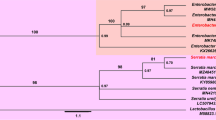Abstract
Triticale is a frequently cultivated and used in feed rations because of high yields of kernels and straw. Furthermore triticale is cosidered in a culturelandscape program. The storage of triticale and storage conditions become more and more important. In our study Triticale was remoistered to a watercontent of 14, 16, 18, und 19% as well, inoculated withP verrucosum and stored for 28 weeks from november till july in a research granary (tower silo). This experiment should simulate the storage situation in farmscale from cold wintermonths to warm spring times. Every four weeks CO2 was measured, and samples for moisture, OTA- and CT-analysis were taken. At week 20 and a MC of 19 % 22 μg OTA/kg triticale were found. The maximum of OTA-production in this humidity stage was at week 28 with 635 μg/kg. Also at a MC of 18 % OTA could be found with levels near to the detection limit. In contrast to former investigations with oatsP verrucosum produced in triticale no citrinin even when the OTA concentrations were higher than in our investigations.
Similar content being viewed by others
Literatur
Abramson D, Sinha RN, Mills JT (1980) Mycotoxin and odor formation in moist cereal grain during granary storage. Cereal Chem. 57, 346–351.
Abramson D, Sinha RN, Mills JT (1982) Mycotoxin formation in moist wheat under controlled temperatures. Mycopathologia 79, 87–92.
Abramson D, Sinha RN, Mills JT (1985) Mycotoxin Formation and Quality Changes in Granary-Stored Corn at 16 and 21% Moisture Content. Sc. D. Al. 5, 653–663.
Abramson D, Sinha RN, Mills JT (1987) Mycotoxin formation in moist 2-row and 6-row barley during granary storage. Mycopathologia 97, 179–185.
Abramson D, Mills JT, Sinha RN (1990a) Mycotoxin production in amber durum wheat stored at 15 and 19% moisture content. Food Additives and Contaminants, Vol. 7, Nov. 5, 617–627.
Abramson D, Sinha RN, Mills JT (1990b) Mycotoxin formation in HY-320 wheat during granary storage at 15 and 19% moisture content. Mycopath. 111: 181–189.
Abramson D, Richter W, Rintelen J, Sinha RN, Schuster M (1992): Ochratoxin A-Production in Bavarian cereal grains stored at 15 and 19 % moisture content. Arch. Environ. Contam. Toxicol. 23, 259–265.
Dietrich R, Usleber E, Abramson D, Märtlbauer E (1998) Herstellung monoclonaler Antikörper gegen Citrinin. 20. Mykotoxin-Workshop, Proceedings, 208–212.
Geisen R (2001) Mündl. Mitteilung 23. Mykotoxin-Workshop.
Hill RA, Lacey J (1983) Factors determining the microflora of stored barley grain. Ann., appl., Biol., 102, 467–483.
Hill RA, Lacey J (1984): Penicillium species associated with barley grain in the U. K. Trans., Br., mycol. Soc., 82, 2, 297–303.
Hofmann G, Müller HM (1993) Vorkommen von Penicillium — Arten in Getreide und Bildung von Ochratoxin A und Citrinin unter Laborbedingungen. 15. Mykotoxin-Workshop, Jena, Kurzfassungen.
Northolt M, D van Egmont HP, Paulsch WE (1979) Ochratoxin A Production by Some Fungal Species in Relation to Water activity and Temperature. Journal of Food Protection Vol. 42, No.6, 485–490.
Richter W, Rintelen J, Bucher E, Schuster M, Helminger J (1996) Untersuchungen zur Mykotoxinbildung während der Lagerung von Getreide. 1. Mitteilung: Lagerung von Getreide mit Sollfeuchtegehalten von 15 bzw. 17% über 60 Wochen. Schule und Beratung, 12, IV-1–IV-5.
Richter W, Schuster M, Scholz W (1997) 2. Mitteilung: Lagerung von Wintergerste mit unterschiedlichen Feuchtegehalten, beimpft mit einem Ochratoxin A-bildenden Schimmelpilz (Penicillium verrucosum). Schule und Beratung 1, IV-1–IV-3;
3. Mitteilung: Lagerung von Weizen, belastet mit Deoxynivalenol (DON) und beimpft mit einem Ochratoxin A-bildenden Schimmelpilz (Penicillium verrucosum). Schule und Beratung, 06, IV-12-IV14.
Richter W, Schuster M, Scholz W, Baranowski A (1998) Ochratoxin A (OTA)-und Citrinin (CT)-Bildung, in mitPenicillium verrucosum infiziertem Futterhafer. 20. Mykotoxinworkshop, Proceedings, 100–104.
Schuster M (1998) Schriftliche Mitteilung.
Author information
Authors and Affiliations
Corresponding author
Rights and permissions
About this article
Cite this article
Richter, W., Baranowski, A., Schuster, M. et al. Bildung von Ochratoxin A bei der Lagerung von Triticale nach künstlicher Infektion mitPenicillium verrucosum in Abhängigkeit unterschiedlicher Feuchtegehalte. Mycotox Res 17 (Suppl 2), 193–197 (2001). https://doi.org/10.1007/BF03036434
Issue Date:
DOI: https://doi.org/10.1007/BF03036434




